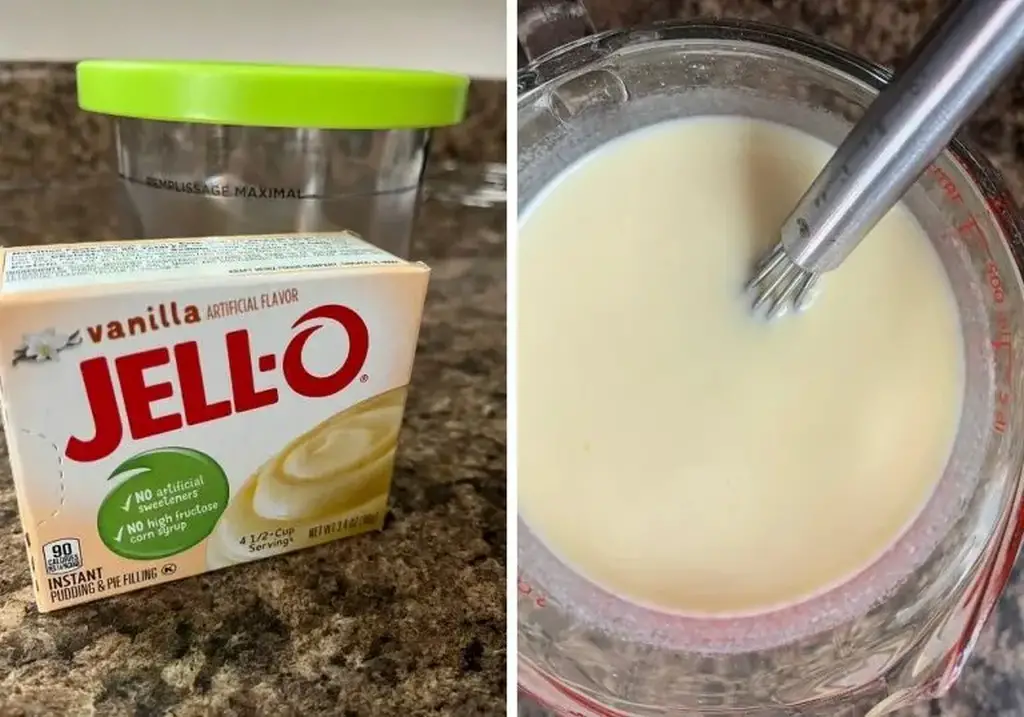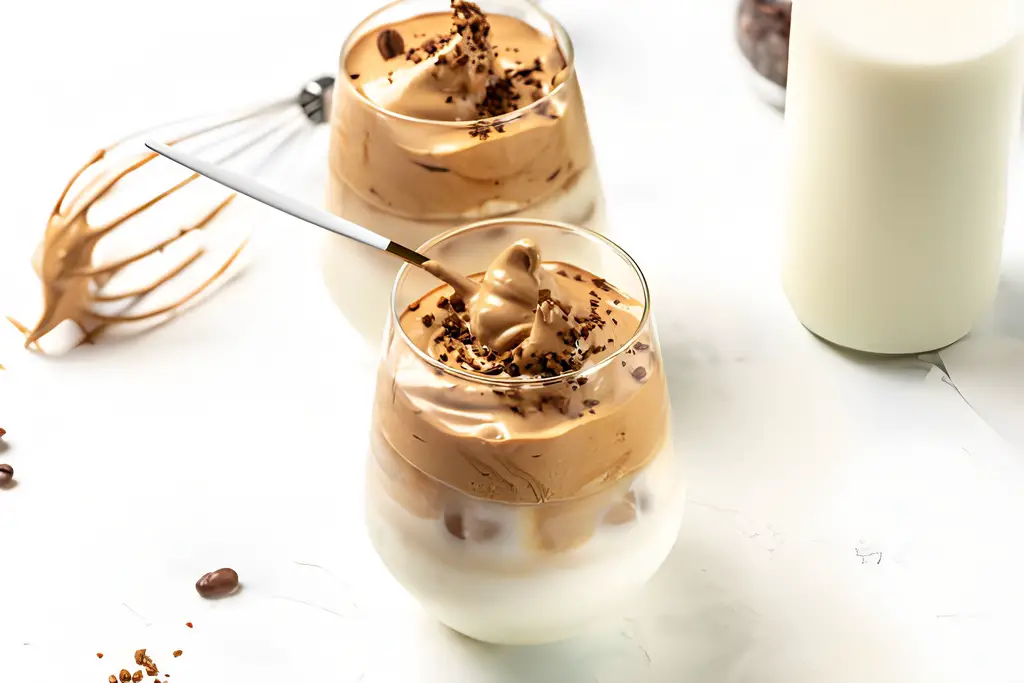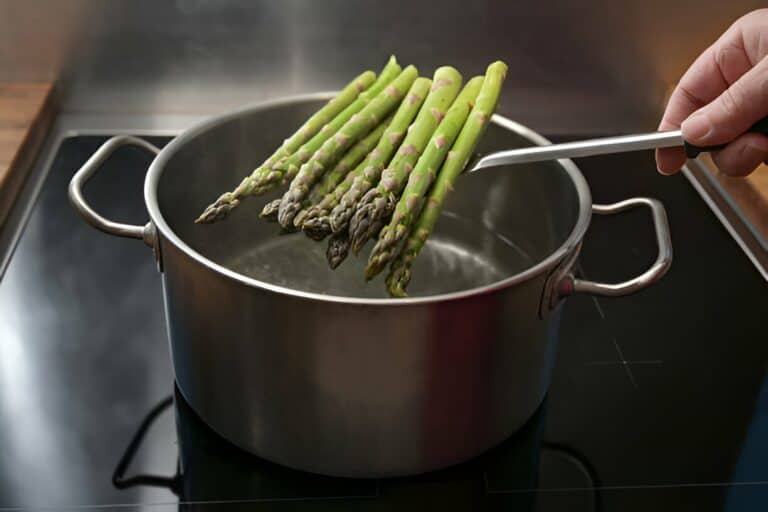What are the Differences between Instant Pudding and Cook and Serve Pudding?

Puddings, the beloved desserts that have stood the test of time, continue to tantalize our taste buds with their creamy textures and sweet flavors. From classic favorites like chocolate and vanilla to more adventurous creations such as caramel or pistachio, puddings offer a delightful treat for any occasion.
When it comes to making puddings, there is no shortage of options available. However, two popular choices often come into play: instant pudding and cook and serve pudding. These variations may seem similar at first glance, but they actually differ in several important ways, from their preparation methods to the resulting texture and taste.
In this article, we will embark on a delicious journey into the battle of puddings as we compare instant pudding with its counterpart, cook and serve pudding. We will examine how each type is made, the ingredients used, their spoonful textures, and help you choose the one that suits your tastes.
Let’s dig deeper into these creamy delights and discover which one reigns supreme in The Battle of Puddings!
Understanding Instant Pudding

Instant pudding is a convenient and popular option for those seeking a quick and easy dessert or ingredient for recipes. Unlike other types of puddings, which require stovetop cooking or prolonged baking time, instant pudding can be prepared in a matter of minutes.
This makes it perfect for those who are short on time but still crave the creamy goodness of pudding. Here are some key features that set instant pudding apart:
1. Quick Preparation:
- No need to cook! Simply mix the instant pudding powder with milk, whisk vigorously, and voila – your dessert is ready in minutes.
2. Convenience in a Packet:
- Packaged in convenient single-serving packets, instant pudding is ideal for busy individuals or last-minute dessert plans.
3. Diverse Flavors:
- From classic vanilla and chocolate to exotic flavors like pistachios or banana cream, instant pudding offers a wide range of options to satisfy diverse taste preferences.
4. Smooth and Creamy Texture:
- Instant pudding is renowned for its silky and smooth texture, making it a crowd-pleaser for those who appreciate a velvety dessert.
5. Versatility:
- With just simple modifications, you can transform this dessert into countless flavor options, such as chocolate, vanilla, butterscotch, or even exotic choices like dulce de leche or pistachio. The ease with which different flavors can be achieved allows home cooks and bakers to experiment with various combinations and create unique desserts tailored to their preferences.
Delving into Cook and Serve Pudding
Cook and serve pudding, as the name suggests, requires a bit more effort in its preparation compared to instant pudding. The defining characteristic of cook and serve pudding is that it needs to be cooked on the stovetop or in the microwave before it can be served.
This extra step gives the pudding a homemade feel, making it an attractive option for those who enjoy putting love and care into their desserts. Let’s explore the distinctive aspects that make this pudding a favorite for those who enjoy the art of homemade treats:
1. Cooking Process:
- Unlike its instant counterpart, cook and serve pudding demands a bit of time in the kitchen. It involves heating the pudding mixture on the stove until it thickens to perfection.
2. Rich and Authentic Flavors:
- Cook and serve puddings often boast richer flavors and a more homemade taste, as they are crafted from scratch using ingredients like eggs, sugar, and milk.
3. Customization Options:
- With cook and serve pudding, you have the freedom to adjust the sweetness, experiment with flavors, and even add personal touches like fresh fruits or nuts during the cooking process.
4. Warm or Chilled Delight:
- Serve it warm right from the stove or chill it in the refrigerator for a cool and refreshing dessert experience. Cook and serve pudding offers versatility in serving temperatures.
Instant Pudding and Cook and Serve Pudding: The Differences
Texture Differences:
When it comes to texture, instant pudding and cook and serve pudding have their own unique characteristics. Instant pudding, as the name suggests, sets up almost instantly once mixed with milk or water. It has a smooth and creamy consistency that is ready to be enjoyed within minutes. The quick setting time of instant pudding also means that it doesn’t require any cooking on the stovetop or in the oven.
On the other hand, cook and serve pudding takes a bit more time and effort to achieve its desired texture. This type of pudding requires being cooked on the stovetop until it thickens and reaches a custard-like consistency. As it cooks, you can feel its smoothness develop gradually and observe how it transforms from liquid to a velvety treat.
The contrasting textures of instant pudding versus cook and serve pudding offer different experiences for those indulging in this delectable dessert. Those who enjoy immediate gratification might prefer the soft creaminess of instant pudding straight out of the bowl without sacrificing taste or quality for convenience.
Meanwhile, individuals who savor every step of preparing an enticing dessert may find satisfaction in control over achieving just the right thickness with cook and serve puddings – enjoying not only each spoonful but also relishing in their mastery as they witness its transformation along the way.
With these distinctive methods resulting in diverse textures, having both types around allows home cooks to choose according to their preferences – whether speedily delivering silky bliss after a long day at work with instant options or engaging playfully in kitchen alchemy with cooked offerings when leisurely creating satisfying treats
Taste Factors Comparison
When it comes to taste, both instant pudding and cook and serve pudding have their own unique characteristics. Instant pudding has a reputation for being sweet and velvety, with a smooth texture that melts in your mouth. Its flavors are often intensified due to the use of artificial additives, such as artificial sweeteners and flavorings. These additives can give instant pudding a more pronounced taste compared to its cook and serve counterpart.
On the other hand, cook and serve pudding tends to have a subtler taste. Since it is cooked over heat on the stovetop or in the oven, the natural ingredients have time to develop their flavors more fully. Cooks who prefer a more authentic taste may opt for this type of pudding because it lacks some of the processed elements found in instant versions.
It is worth noting that both types of puddings offer various flavor options beyond just chocolate or vanilla. From rich caramel to tangy lemon or even exotic matcha green tea – there’s a flavor out there for everyone’s palate!
| Related: What Are the Substitutions for Instant Pudding Mix? |
Convenience Considerations
When it comes to convenience, instant pudding takes the cake…or should we say, pudding. Instant pudding lives up to its name by offering a quick and hassle-free preparation process. All you need is a packet of instant pudding mix and some milk, and voila! In just a matter of minutes, you’ll have a smooth and creamy dessert ready to be enjoyed.
This makes it an ideal option for those moments when you’re craving something sweet but don’t want to spend too much time in the kitchen.
On the other hand, cook and serve pudding requires a bit more effort on your part. As the name suggests, this type of pudding needs to be cooked on the stovetop before it can be chilled and served. While this means waiting longer for your dessert fix compared to instant pudding, there’s something satisfying about dedicating time and attention to making food from scratch.
Exploring ease-of-use factors:
Instant pudding wins points in terms of simplicity, not only because it requires minimal cooking but also because it thickens rapidly without any heat involved. Once you mix together the powder with milk (or water), all that’s left is to give it a good whisk until it reaches your desired consistency—easy!
Cooking cook-and-serve puddings may seem like another story entirely. However, following step-by-step instructions isn’t as daunting as one might assume. By simmering the mixture over low heat while stirring continuously until thickened, you’ll achieve that classic custard-like texture associated with traditional homemade puddings.
Discuss relevant storage instructions:
In terms of storage considerations, both types of puddings have their own guidelines for optimal freshness.
For prepared instant pudding leftovers or store-bought varieties that come in tubs or single-serving cups – refrigeration is key! These types of puddings typically contain dairy ingredients which require cold temperatures to maintain quality.
For leftover cook-and-serve puddings made from scratch, it’s best to transfer them into an airtight container and refrigerate promptly. Proper storage is crucial, as cooked puddings can become a breeding ground for bacteria if left at room temperature for too long.
When it comes to convenience and ease of use, instant pudding may triumph over cook-and-serve pudding due to its quick preparation time and minimal cooking requirements. However, some may prefer the satisfaction of making homemade desserts using the traditional cook-and-serve method.
Ultimately, your choice will depend on factors such as available time, personal preference, and desired texture. Whichever route you choose – whether you’re whisking up instant pudding or taking the stove-top approach – both types promise a delightful ending: a velvety spoonful of decadent goodness that brings joy with every bite.
Comparing the Two: Which is Right for You?
When it comes to deciding between instant pudding and cook and serve pudding, there are a few key factors to consider. Let’s explore the pros and cons of each type to help you understand which one may be better suited to your needs.
| Criteria | Instant Pudding | Cook and Serve Pudding |
| Preparation Time | Minutes | Requires Cooking Time |
| Flavor Variety | Wide range of flavors, often exotic | Rich, traditional flavors |
| Texture | Smooth and creamy | Depends on the cooking technique |
| Convenience | Instant packets, ideal for quick desserts | Requires stovetop preparation |
| Customization | Limited customization options | Freedom to adjust flavors and texture |
So which one should you choose? It largely depends on your preferences and circumstances. If convenience is paramount, then instant pudding might be your best bet; however, if you’re looking for a richer texture or enjoy traditional cooking methods, opt for cook and serve pudding instead.
By weighing these pros and cons against your own priorities, you’ll be able to make an informed decision about which type of pudding suits your needs best
Conclusion: Choosing Your Pudding Adventure
In conclusion, both instant pudding and cook and serve pudding have their own strengths and weaknesses. Instant pudding offers convenience with its quick preparation time, smooth texture, and wide variety of flavors. It is perfect for busy individuals who want a fast dessert option without compromising on taste.
On the other hand, cook and serve pudding brings a nostalgic touch to homemade desserts with its traditional cooking method. The slightly thicker consistency and richer flavor make it a popular choice among those seeking a more authentic pudding experience.
Ultimately, the choice between instant pudding and cook and serve pudding comes down to personal preference and specific recipe requirements. Whether you choose to go for the ease of instant or opt for the classic approach of cook-and-serve, rest assured that either option will satisfy your craving for a deliciously creamy treat.
However, if you do find yourself torn between the two types of puddings, why not try experimenting by combining them? Make an indulgent layered dessert using instant chocolate pudding as the base layer topped with a luscious homemade vanilla cook-and-serve layer. This way, you can enjoy the best of both worlds – convenience paired with traditional flavors!
So next time you’re in need of some sweet comfort food or looking to impress your guests at dinner parties, don’t forget about these two classic options: instant pudding or cook & serve! Whichever route you take when creating your delectable masterpiece – just remember one thing above all else – embracing your sweet tooth has never been so easy!
FAQs
How do the cooking time and effort compare between instant pudding and cook and serve pudding?
Instant pudding requires minimal effort, just mix and chill. Cook and serve pudding involves stovetop cooking, extending the preparation time and requiring more attention.
Can instant pudding be used in homemade dessert recipes, or is cook and serve pudding preferred?
Instant pudding is convenient for homemade desserts, while some may prefer the cooked flavor of cook and serve pudding. The choice depends on personal preference and time constraints.
Are there specific advantages to us
Yes, instant pudding is known for its convenience due to its quick preparation and no-cook nature. It is a time-saving option compared to cook and serve pudding.
How do the taste and texture of homemade desserts differ when using instant pudding versus cook and serve pudding?
The taste and texture vary; instant pudding tends to offer a smoother and lighter consistency, while cook and serve pudding provides a richer, cooked flavor with a denser texture.
What are the key considerations for choosing between homemade desserts with instant pudding and those with cook and serve pudding?
Consider time constraints, as instant pudding is quicker. Additionally, evaluate personal preferences for texture and flavor, as cook and serve pudding offers a distinct, cooked taste.
How do the pudding preparation methods differ between instant pudding and cook and serve pudding?
The key difference lies in the preparation method. Instant pudding requires no cooking; it’s a simple mix-and-chill process. Cook and serve pudding involves stovetop cooking, creating a distinct texture and flavor.






